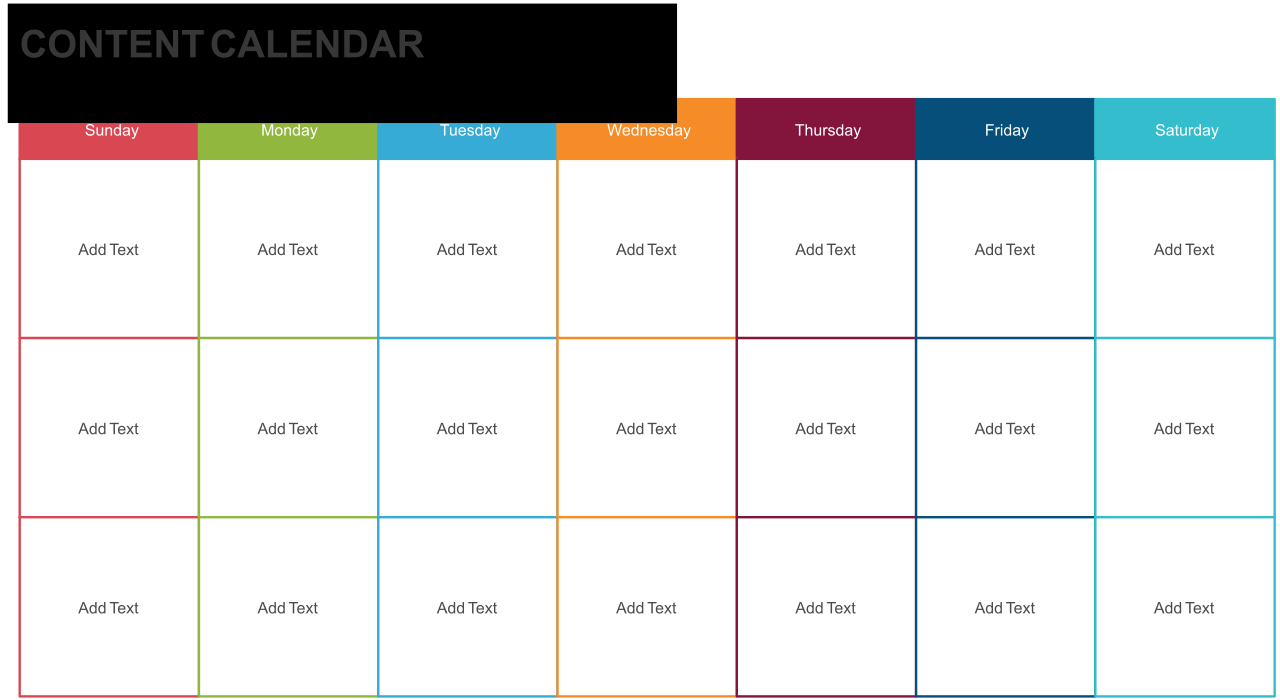Career Tips
How To Create A Content Calendar – Step-By-Step Guide

Content calendars are the most effective way to organize your unique content production and keep a consistent publishing flow. Learn why it is important and why you should create one.
What Is a Content Calendar?
A content calendar is a schedule of the workflow tasks that content producers must complete. It’s a tool for organizing, prioritizing, and tracking content. A content calendar enables you to stay on top of your strategic game.
A content calendar is a marketing tool for planning, scheduling, and organizing content.
It can be used to schedule blog posts or social media posts ahead of time in order to develop new marketing strategies.
A content calendar organizes your publishing schedule by date, ensuring that deadlines are met. It can help you manage your team and increase transparency among all parties.
Why Do Companies Need Content Calendar?
Without a content calendar, hobby bloggers can survive. Structure is essential if it’s more than a hobby. Marketing strategy should guide content creation. Thus, careful planning is necessary. Neglecting a content calendar can lead to last-minute writing and other overwhelming tasks.
Sometimes you have too many tasks and don’t know where to start. A content calendar shows your content perspective. The big picture can be seen in content details: post bird-eye ideas, types, updates.
Successful marketing requires high-quality content. Many businesses don’t realize that regularly creating and publishing high-quality content is laborious.
Here, content calendar helps! It streamlines content planning, organization, and publication. Locked in your head, your content life may suffer an editorial crisis.
1. Define Your Content Pipeline
Your time will be better spent on the things that matter most when you know which posts work best.
To grow, you need healthy pipelines that bring in more content. Bring together the spirit of the brand with the concerns of your audience to make something useful. Content Pipeline will list all the information that is needed to get the content going.
2. Follow Constant Flow
Who wants their content to turn into only a one-hit sensation? You could avoid this by using a content calendar.
The content calendar gives stability and room for improvement. You know the precise direction and can keep matters under control.
3. Better Planning
Planning well is the most important thing for content success. A well-organized content calendar will help you plan and write without getting too busy at the last minute. It will also make sure that your content fits in with your overall strategy.
You feel better about yourself when you plan better. Nothing is better than this when you’re writing! You know what and why you are writing.
Making a content calendar will help you write things that are:
- In accord with the target audience
- Well researched
- Placed in an appropriate place where customers move
Time magazine has a full calendar, including print, online, and event advertising deadlines.
So they have something new to offer their audience, and readers know what to expect from them. Inc understands what to expect from its audience, which is why they create content that is both predictable and adaptable. This ensures that they always deliver the types of posts that their followers enjoy the most.
4. Be Innovative
Do not press your imagination. Even if you believe that something does not make sense, still record and recall that. Then idea can suddenly dawn on you.
How to Create a Content Calendar?
1. Define your Content Marketing Strategy
Content strategy unites objectives and goals into an ultimate document.
2. Set the Goals
Goals are an essential part of your pursuit. Without it, you could not evaluate your efforts.
Follow the SMART model to come up with a well-thought goal:
S = Specific (specific, that is, your goal should not be “more success,” but for example, “more revenue”)
M = Measurable (measurable: Choose clear and quantifiable key performance indicators)
A = Accepted (objectives must have a recognizable meaning to be accepted by all parties)
R = Realistic (realistic, workable; the goal must be achievable)
T = Timebound; ( Specify a time when you reach the goal)
3. Meet your costumers better
- Which media channels do they favor?
- What are their interests?
- How can your company benefit them?
- Which content types do they like?
4. Analyze Competitors
- What are their strengths?
- What are their weaknesses?
- Outline Unique Selling Point
- What distinguishes your product from competitors?
5. Define tactics,
You create the content to influence specific marketing goals. So, content falls into the category of tactics. Explain content types, helping you to achieve your marketing goals.
6. Pick KPIs to track your success
KPIs imply a set of metrics that help companies evaluate progress to strategic objectives. KPIs are more than just numbers. It enables you to feel the pulse of the team’s performances.
- Include Relevant Information
- Explain the process team should follow
- Posting Frequency
- Define Content types
- Choose Topics
- Publish Dates
- Indicate Distribution Channels
7. Choose the Tool
8. Be Consistent
Stay dedicated to your strategy and daily planning.
How Do I Gather Information for Content Calendar?
Here we go! There are some questions you should dwell on:
Publishing Frequency
- It depends on the channel and content type. If we talk about blogging updates, 2-4 per week is a good number. For social media, things turn a little bit tight. Once per day is an optimal number, depending on the company type.
Define Content Types
- It’s impossible to give you a concrete number, but relevance is the priority at this stage. Observe what’s working and what’s not. For example, If you consider that the number of content types is not enough, add more.
Before you define what content types, ask yourself
- Who are you creating content for?
- What are their interests?
- What are their pain points?
Once you’ve identified your target audience, you can start creating relevant content. But not all content is created equal. You should consider what types of content will help you achieve your goals.
So find inspiration to create that content on a daily basis. What type of content is best for your company? It varies depending on the industry and target market you want to reach. However, blog posts are excellent for getting started because they are relatively easy to provide and can be updated frequently.
Distribution Channels
- The answer should come from the audience personas. What is their preferred source of information?
What Stages Will My Content Need to Go Through?
How hard is it for content to breakthrough? Describe the steps the material goes through before seeing the light. Everyone, including new team members, will know what it takes to complete the process. Typically It is:
- Research
- Drafting
- Proofreading
- Revision
- Finalizing
Set the standards that everyone should follow before moving it to a new level. State the readability score, platform usage, platform rankings, etc.
Why Do You Need to Use Content Calendar Tools?
- Saves time
- Keeps you organized
- Make content creation more efficient
- It helps you create consistent, predictable posts for your readers
- Improves the quality of your content through consistency and a structured approach
- Ensures that all parties involved are on the same page
- Eliminate guesswork and unnecessary revisions
Where Can I Get Content Calendar Templates?






















